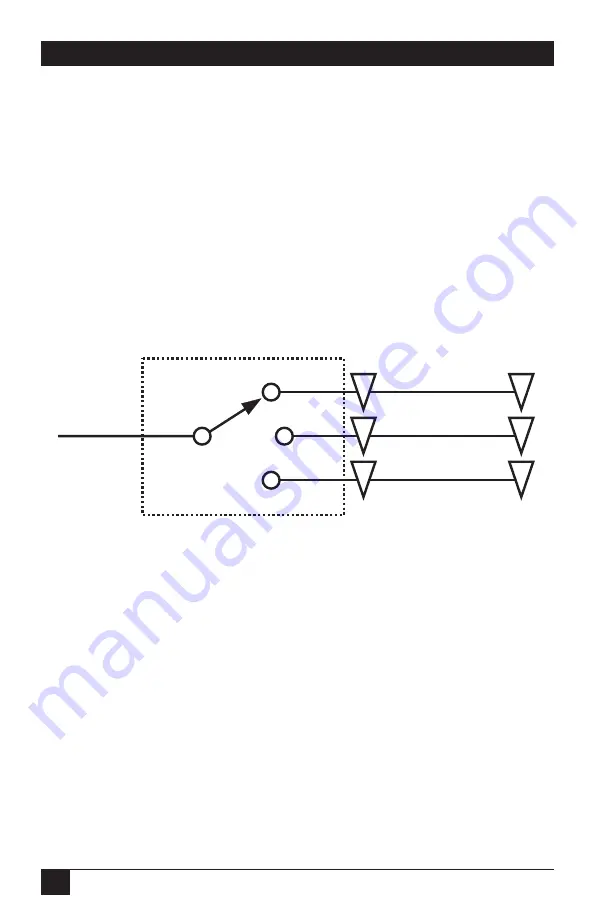
18
SCSI SWITCH II
to match the one on the far end. The only problem with this scenario is that
when you select that branch and the Switch links it to the singly terminated
main bus, the total number of terminators on the bus rises to three.
This violates SCSI rules and has little chance of working properly.
In such cases, special care should be taken to manage the bus
configuration. Termination should always be placed near the ends of the
overall SCSI bus. However, where a branch may have data traffic while
disconnected from the main bus, termination may be moved slightly to
accommodate the situation:
First, shorten the main bus so that it’s no longer than a few centimeters
(two or three inches). Then replace the termination normally found at
the end of the main bus with terminators the top of each branch, no farther
than another few centimeters (another two or three inches) from the SCSI
Switch II:
Figure 6-2. Alternate Termination.
As long as the main bus is short enough, and as long as the main bus has
only one or possibly two devices, these devices will be close enough to the
branch-top termination and the bus will probably operate correctly. However,
please note that such a configuration is still in violation of SCSI rules. This is
also not the intended use of the SCSI Switch II. The Switch is designed to
support “dead” branches only, in conformance with the nature of the SCSI
bus.
If termination is not properly configured, you may experience
unpredictable behavior or loss of data. For more information, please see
the documentation for your particular SCSI devices.
Main Bus
(Short, No
Termination)
Branch Buses (Long,
Both Ends Terminated)















